In Lahaina, the Jodo Mission was an iconic landmark known for its stunning location and scenery. The open Japanese architecture of the temple grounds bonded community members, housed the homeless and hosted Buddhist celebrations. Then, the fire came.
The temple suffered the same tragedy as most of Lahaina on Aug. 8. Engulfed by flames that curled around the temple’s location on Baby Beach, all was lost and turned to black. The Rev. Gensho Hara, 88, has grappled with his grief in the months since, but now, as the first anniversary of the fire nears, he has opened tentative discussions on building a new temple with Shigeru Ban, the 2014 winner of the Pritzker Prize, the world’s most coveted award for architecture
Ban, who is Japanese as well, is best known for his ‘paper’ architectural designs that are intended to be clean and contemporary but also available at a low cost. His structures are made from paper and cardboard tubing that resemble vertical logs, and milk crates, held together by foam tape and threaded rods. Despite being made from paper, Ban’s designs are resilient and have been used to build paper-tube homes, bridges and churches around the world. His designs have been used in Rwanda, Haiti and New Zealand, and more recently for shelters for victims of the Maui Fires.
Aided by his two daughters, Yayoi and Maya, Hara has been in ongoing negotiations with FEMA to find out what would now be permitted on a parcel of temple land that is by the ocean and also adjacent to a flood zone. There are new shore setback limits and minimum 9-foot elevation rules to consider. With so many uncertainties, Ban’s vision of a temporary structure made from paper holds a certain appeal. It could go up quickly and at relatively low cost. It would also bring Ban’s global prestige to the project and provide rebuilding efforts with a spark of excitement.
A Temple with a View
The Lahaina Jodo Mission temple was founded in 1912 by Buddhist monks from Japan. In 1930, the idyllic temple property was purchased for $3,000, paid for by donations. Situated on the beachfront, it has a serene view of three neighboring islands — Molokaʻi, Lanaʻi and Kahoʻolawe — as well as the West Maui mountains.
The temple (Hondō), the three-tiered pagoda (Sanjū No Tō), the Bell Tower and the community buildings that sprung up over the years on these temple grounds served as a beacon of inclusivity that extended its welcome beyond the first few generations of Japanese immigrants, Hara said, and to individuals from all walks of life.
Hara was born and raised in a different Jodo Mission, in a small Japanese mountain village. During World War II, he recalled, his hometown temple served as a refuge for 60 schoolchildren fleeing air raids in Tokyo.
In his late 20s, he was called to serve as a minister in Hawaiʻi and journeyed nine days by boat from Yokohama to Honolulu to take the job. Hara spoke no English at the time. He became the eighth resident minister of the Lahaina Jodo Mission. Nearing 90, he has served in that role for more than 60 years.
In 1968, the original temple also burned down and was rebuilt in Japanese-Buddhist style by its members. After the first fire, Hara said he more fully realized his role in the larger community and found a new sense of purpose to serve Lahaina more broadly.
The new temple was completed that same year, along with the Great Buddha statue and the Temple Bell, both of which survived the more-recent fires. Those enduring artifacts were created in commemoration of the Centennial Anniversary of the first Japanese immigrants in Hawaiʻi. The temple grounds, in turn, are dedicated to honoring and celebrating ancestors, to whom members say they owe their lives today. It was an important place of gathering for the local community.
Known for its history and location, the temple also was a staple in Lahaina tour guide books, bringing in thousands of visitors annually.
Relocated But Ready to Return Home
Since the recent fires, Hara, his family and some his congregation members have been taken in by the Wailuku Jodo Mission temple, located about 45 minutes away from their former home. Hara’s son, Shodo, is the minister there.
Similar to how his hometown temple back in Japan had once housed the Japanese schoolchildren, Gensho Hara had over the years taken in homeless people, offering them a space to stay at the Lahaina temple.
“Rev. Hara and his whole family have always been the most-welcoming, generous, peaceful kinds of people,” said temple member Vashti Daise, “and made this temple feel really special to a lot of people.”
Daise and her husband, Lanny, were married at the temple and became active members after moving back to Maui permanently about seven years ago. Lanny Daise now serves as the vice president of the temple’s board, and Vashti Daise serves as the temple’s secretary.
Although the temple has always remained a place of worship and camaraderie, its congregation had dwindled in the past few years, even before the fire. Vashti Daise’s hope, she said, is that if the mission is rebuilt, it can come back together and be reinvigorated, attracting even more members than before, and the Jodo Mission can again rise from the ashes of a fire as a place of community and worship in Lahaina.
“I really believe in the aftermath of this tragedy, there can be a rebirth from this, because people’s perspectives have changed,” Vashti Daise said. “I think a lot of people are struggling and suffering right now, but yet when that starts to diminish, I think their perspectives are going to be different, and I think they’re going to have even more of the value of the sense of community.”
Remembering the Day of the Fire
Even as they plan for the temple’s return, Hara and his family still struggle with the reckoning of what happened on the day of the fires. Maya was traveling, out of state at the time, meaning Hara and his daughter Yayoi were the only family members there, doing what they could to protect the temple from the flames.
They first noticed unusually strong winds blowing down from the mountains toward the ocean, Hara recalled. Around 3 p.m., the winds were so fierce that the temple front doors blew open. Hara called Lanny Daise for help to fix and secure what remained on the door hinges. To protect the temple, Hara and Daise barricaded the entry with planks of plywood, which at the time, concerned Yayoi about how such an approach might damage the relics inside the temple. Around 4 p.m., the Hara family spotted smoke.
“We barred the doors, and when we were up on the temple platform, I could see a sliver of smoke just off in the near distance,” Yayoi Hara said, “and then I was like, ‘Wow, that’s closer than what they were reporting.’”
By 5 p.m., after deciding there was nowhere else for them to go, the Hara family remained at the temple to avoid the traffic, assuming the open space on the property would hinder the fires from reaching them.
“At this point, we had about three neighbors over at the temple property,” Yayoi Hara said. “The biggest concern was that things were flying. Rooftops, we would see sheets of metal flying through the air, so I was concerned somebody was going to be hit by something.”
In frantic and wide-ranging efforts, the group’s members began taping windows as well as making dinner, before turning the site’s gas off and before watering the property. At that time, Hara said, the flames had reached an open lot across the road from the temple.
“My dad had collected all of these old fire extinguishers, because he thought that the rotary club could do a fire extinguisher practice, so that everybody knew how to use a fire extinguisher,” Hara said. Hara and others carried the fire extinguishers to the road, thinking that throwing them into the flames would be most effective.
Hara said she instructed her daughter to stay with her grandmother, by the covered pavilion area, so they were barricaded from the smoke and facing the ocean.
“There were these plumes of black smoke that would come over and blacken the sky out, it was like being in a war,” Hara said. “It was so sudden. I saw a fire ember hit a coconut tree right in front of the temple property, on the beach, and within a minute, the entire tree was completely engulfed in flames.”
The Haras didn’t end up evacuating the temple grounds until around 6:30 p.m., Hara recalled. By that time, she said there was hardly any traffic on the road, and the family members were under the impression everyone already had evacuated.
“Because of where the temple sits, we’re kind of on a low point,” Hara said. “Even when we were on the temple platform, and looking at that first sliver of smoke, I couldn’t see that Lahaina town was on fire. It did not even cross my mind that Lahaina was on fire at that point.”
Explosions echoed through the air, though, as the fires swallowed more of the nearby town.
“We heard ‘bam, bam bam,’ like the bombs,” Hara said, “like the air raid, ‘bam, bam, bam.’”
Sifting Through the Remains
Even after it was decided that the Haras would evacuate, no one expected the temple to burn down, Hara said, so they left with virtually nothing, assuming the concrete foundations and the location ensured its safety.
After the family evacuated to a home in Wailuku, though, Gensho Hara realized that just about everything had been lost. A few days later, though, he learned that a Vietnamese nun, who had been staying at the temple, had braved the inferno to save one of the treasured Buddha statues from inside the burning temple. For Hara, it symbolized hope, a light that stood out against the blackened sky.
Gensho Hara said he had prayed for the safety of his beloved temple to which he had devoted his life’s work. Three days later, he was digging around in his pocket and discovered his only physical remnant, the key to the temple doors, which he still carries with him today, even though the locks they open were destroyed.
“I thought, there is no sense to hold this (key),” Hara said. “I tried to throw (it) in the rubbish bin, but when I tried to look again, I realized this is the key to open my heart, my past history, so I am still holding it.”

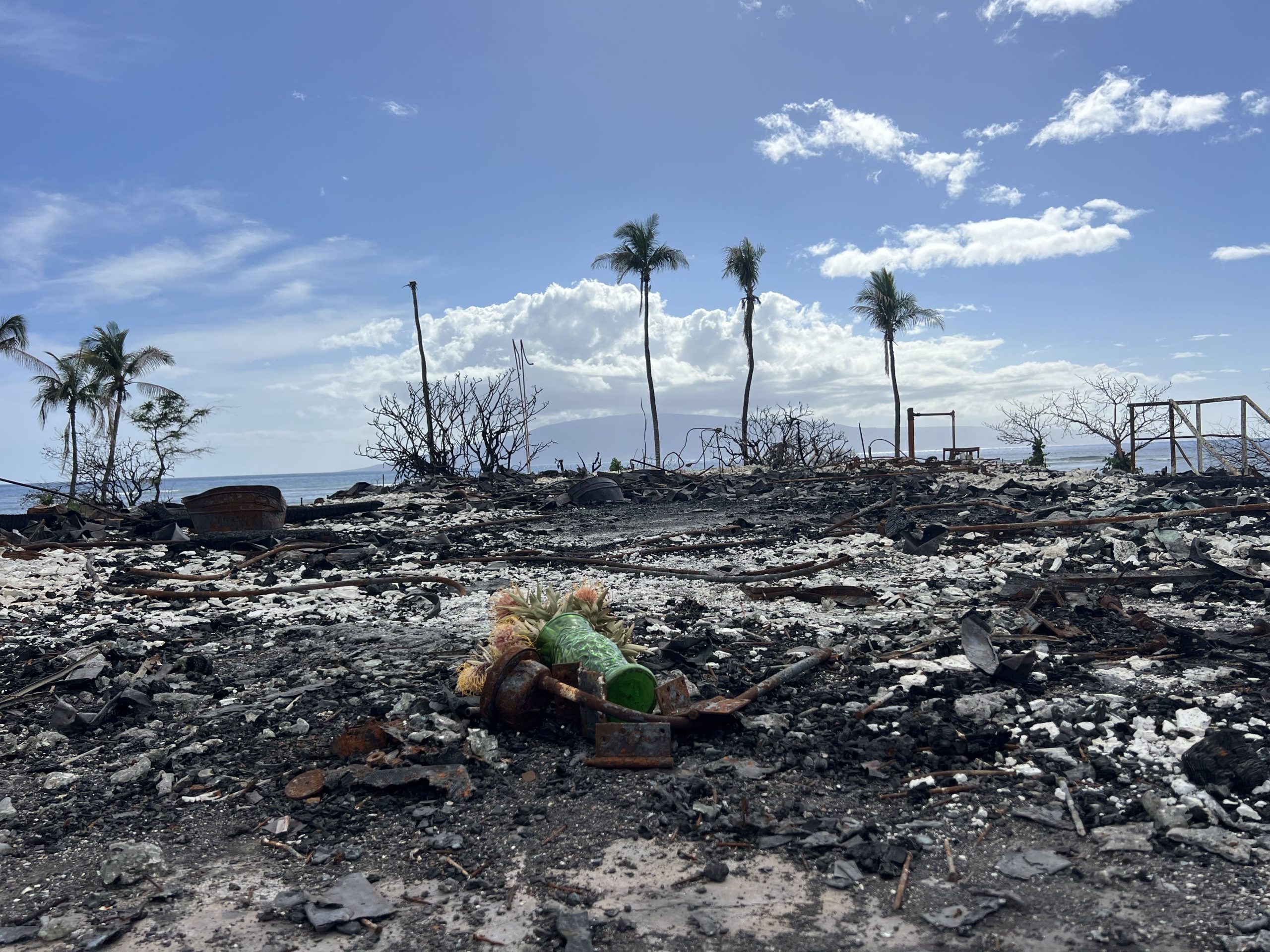
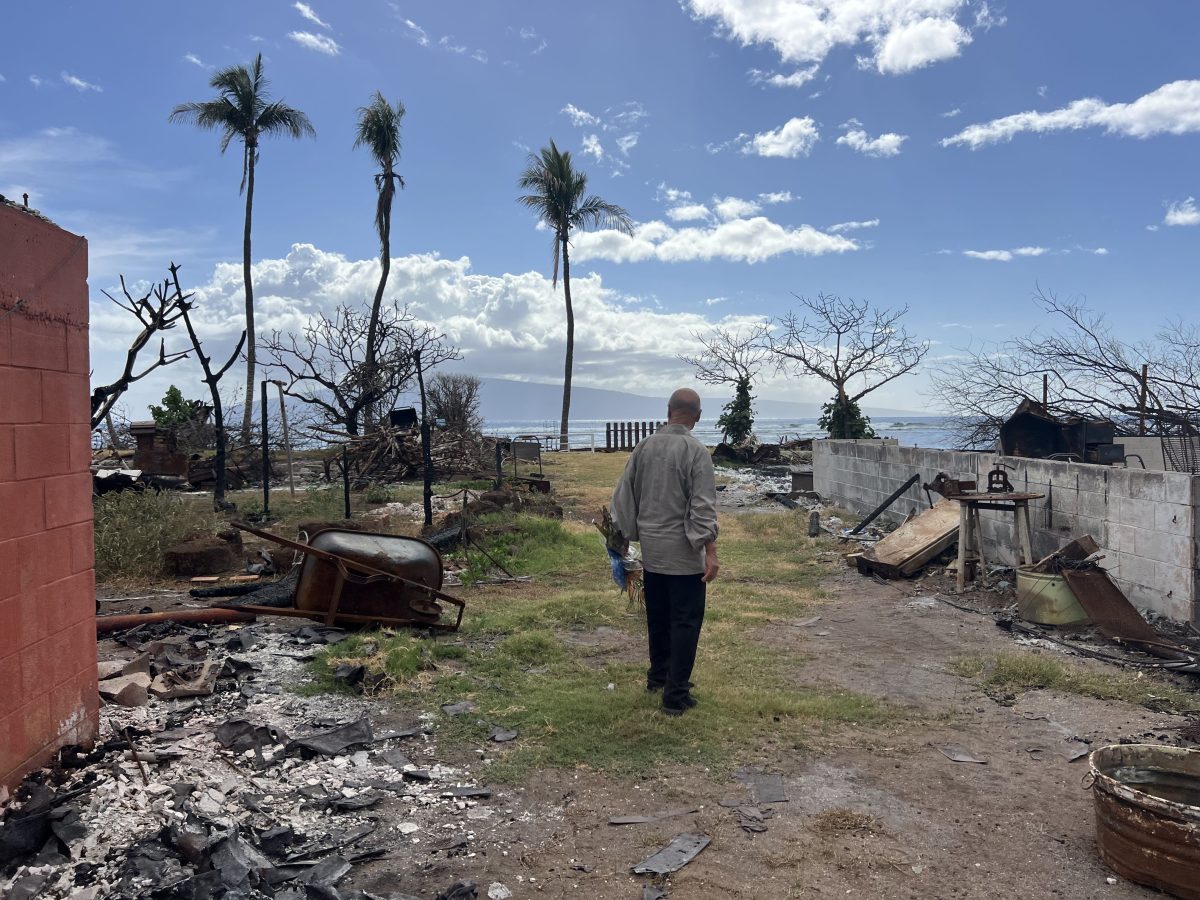
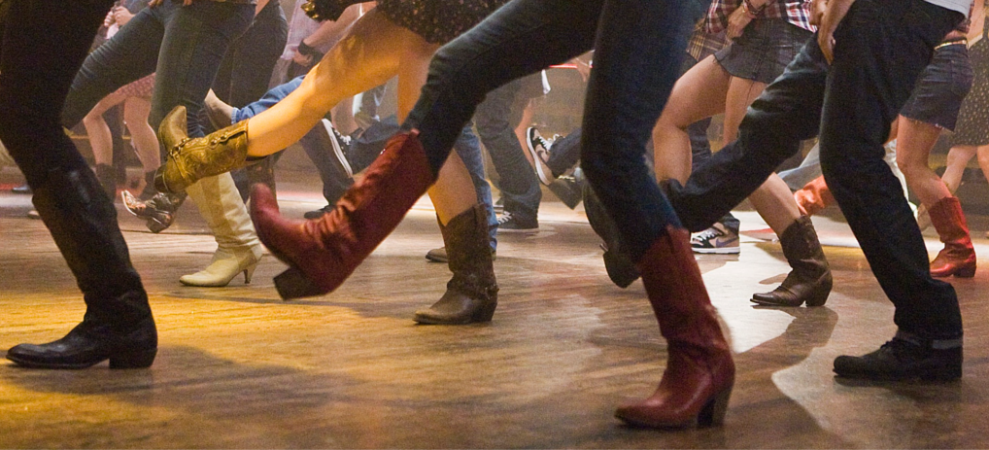
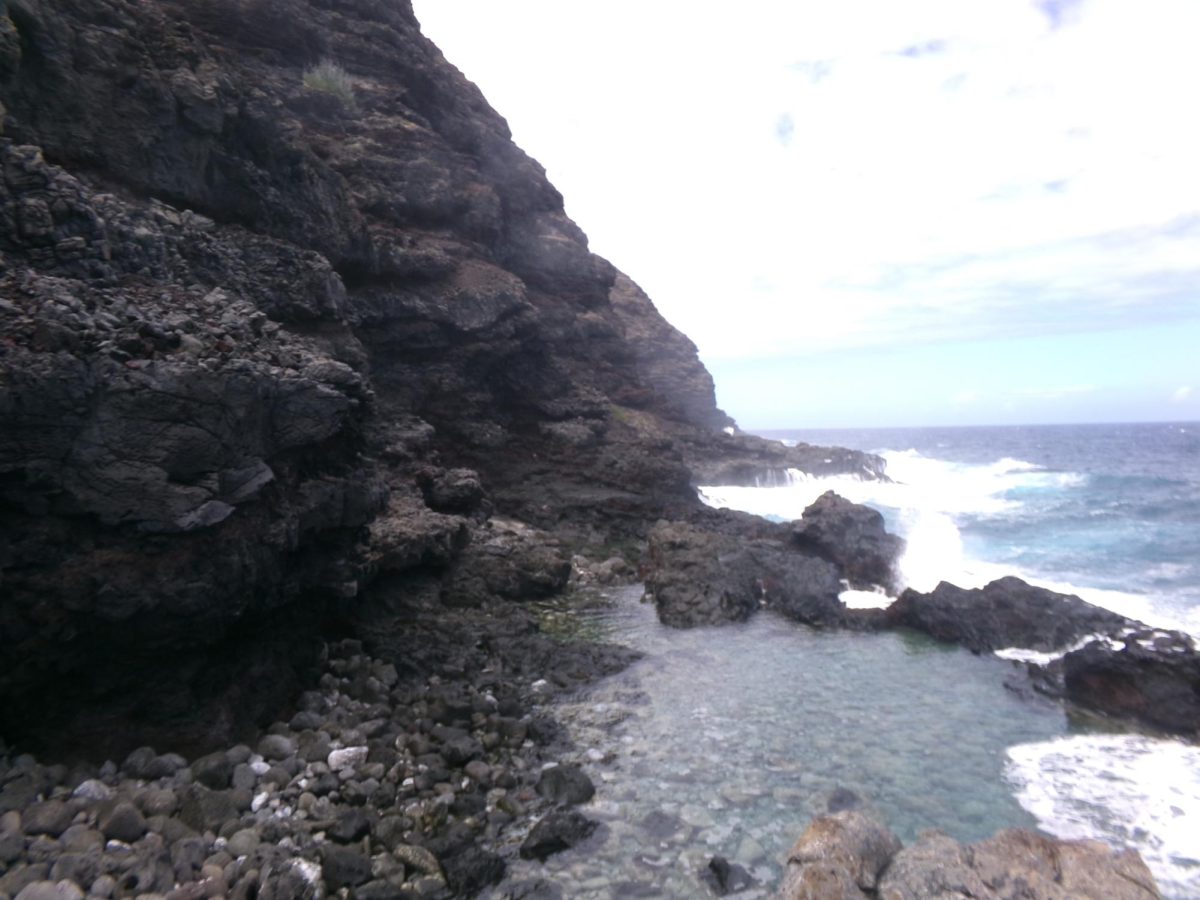

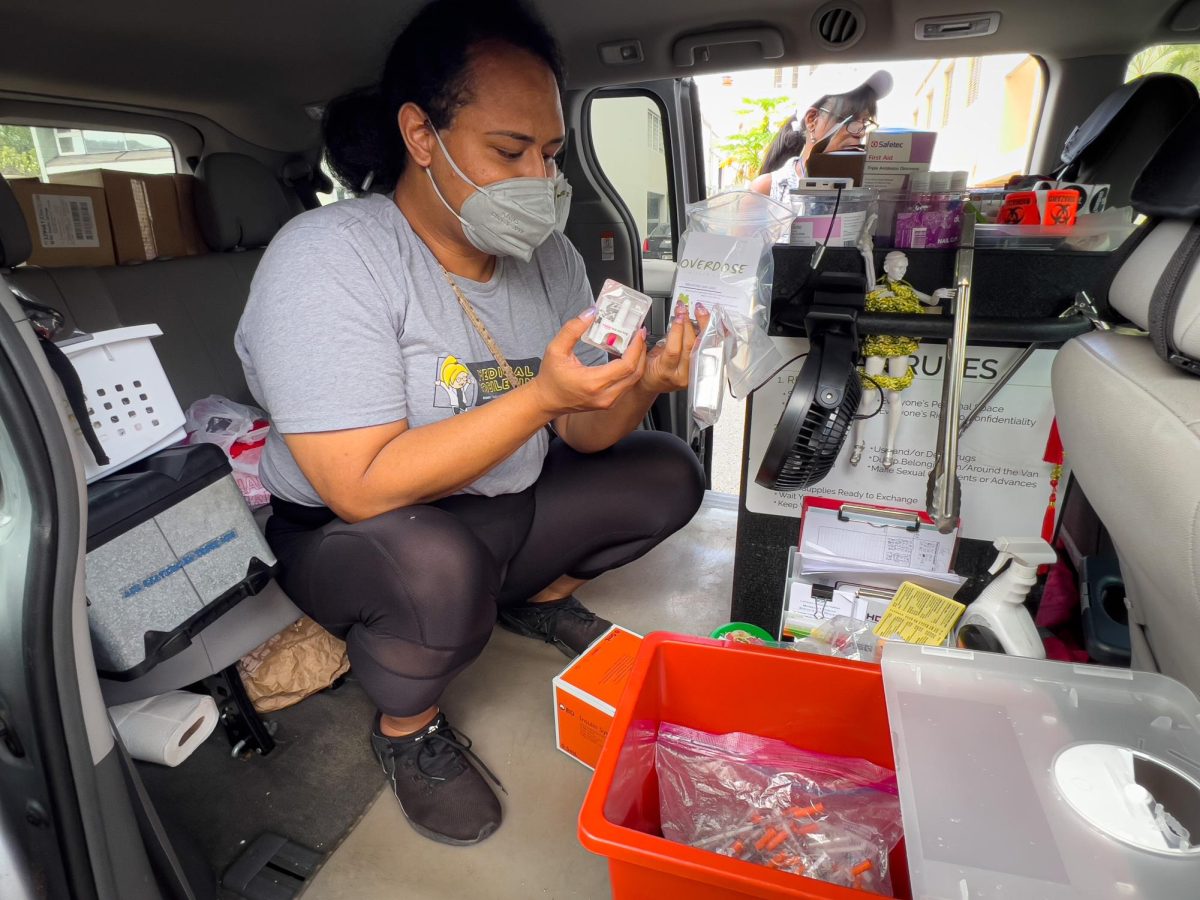


Eileen Pearce • Jun 12, 2024 at 9:53 am
Wow what a interesting and confusing and comprehensive account of the fires and the thoughts of the people involved